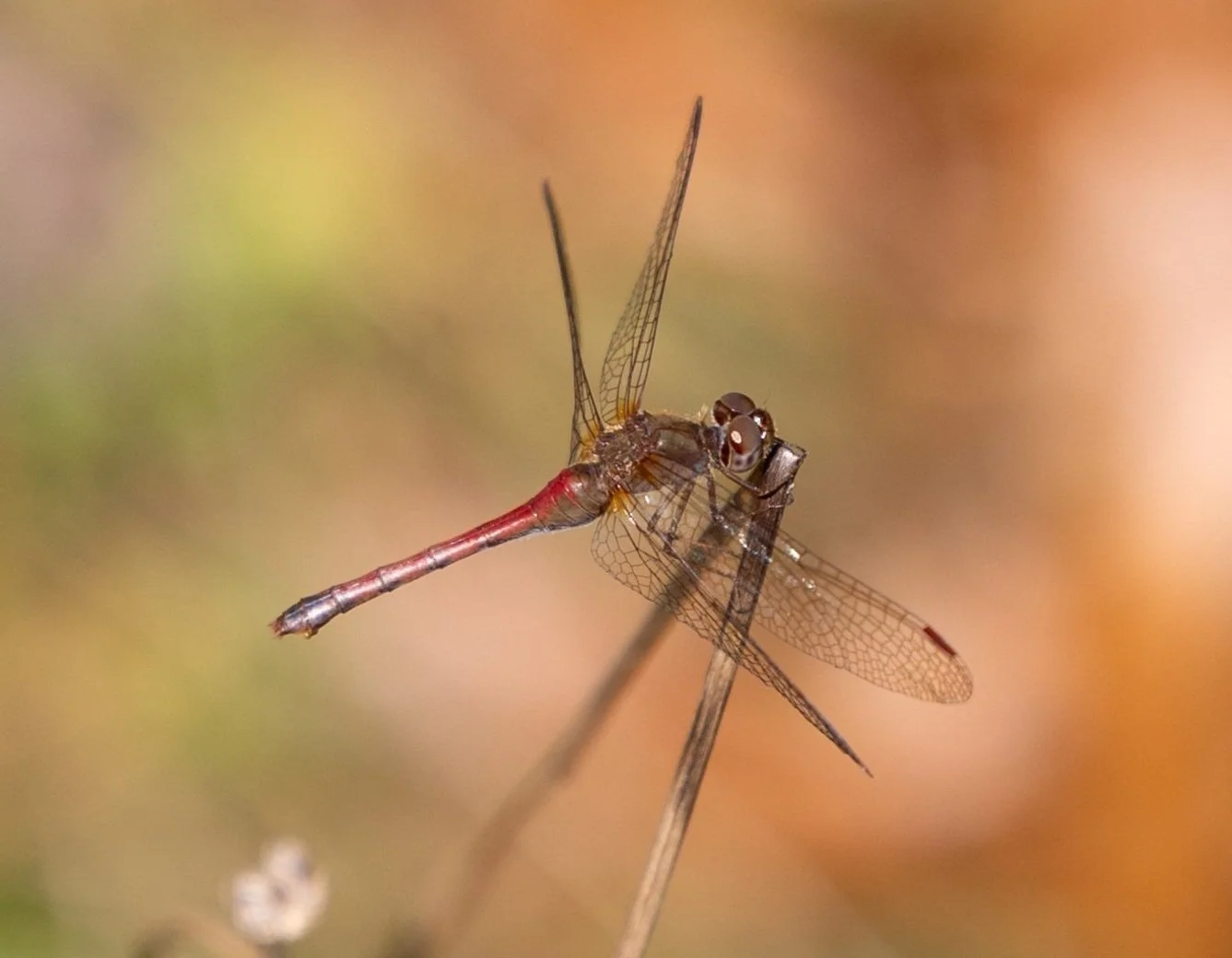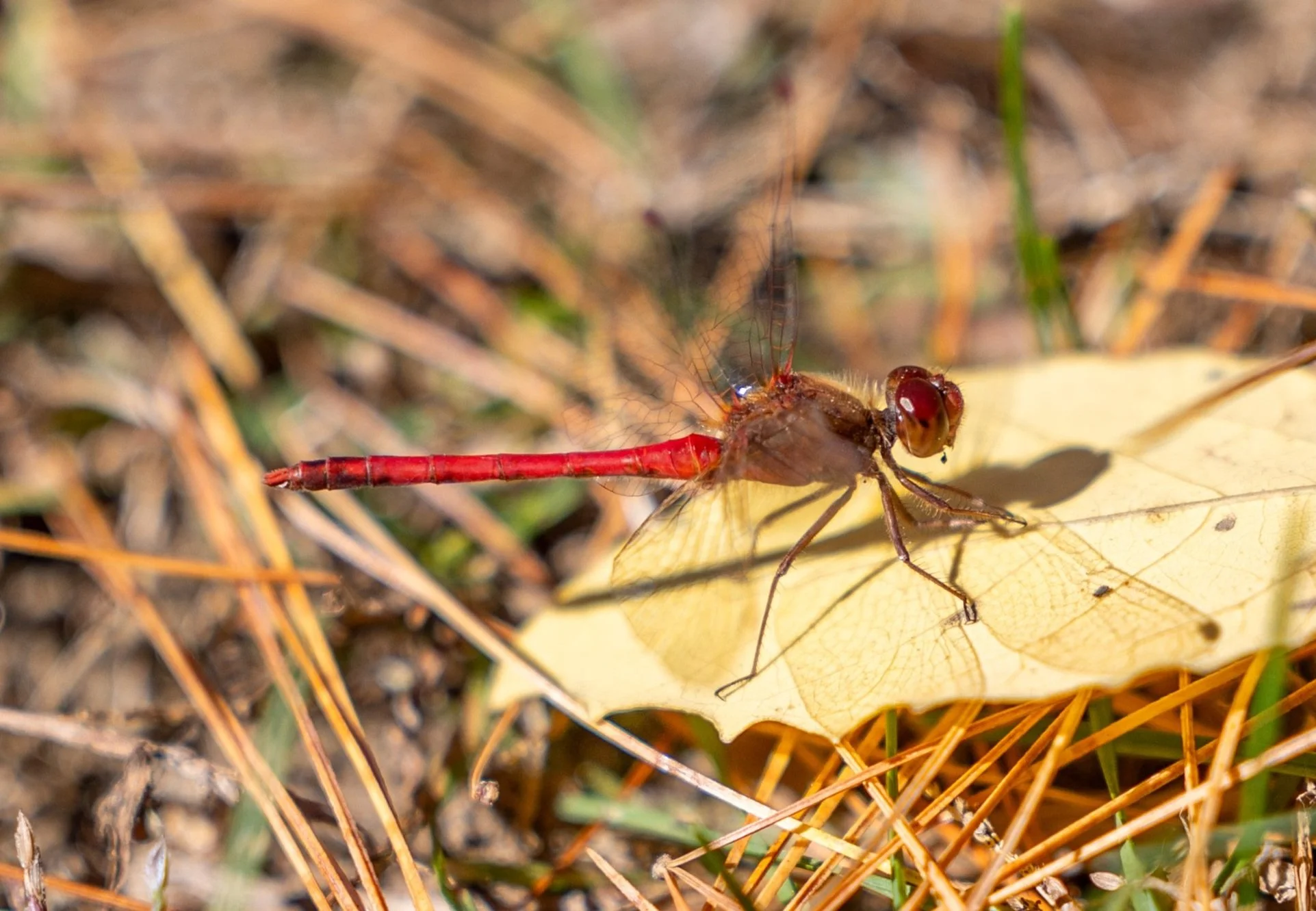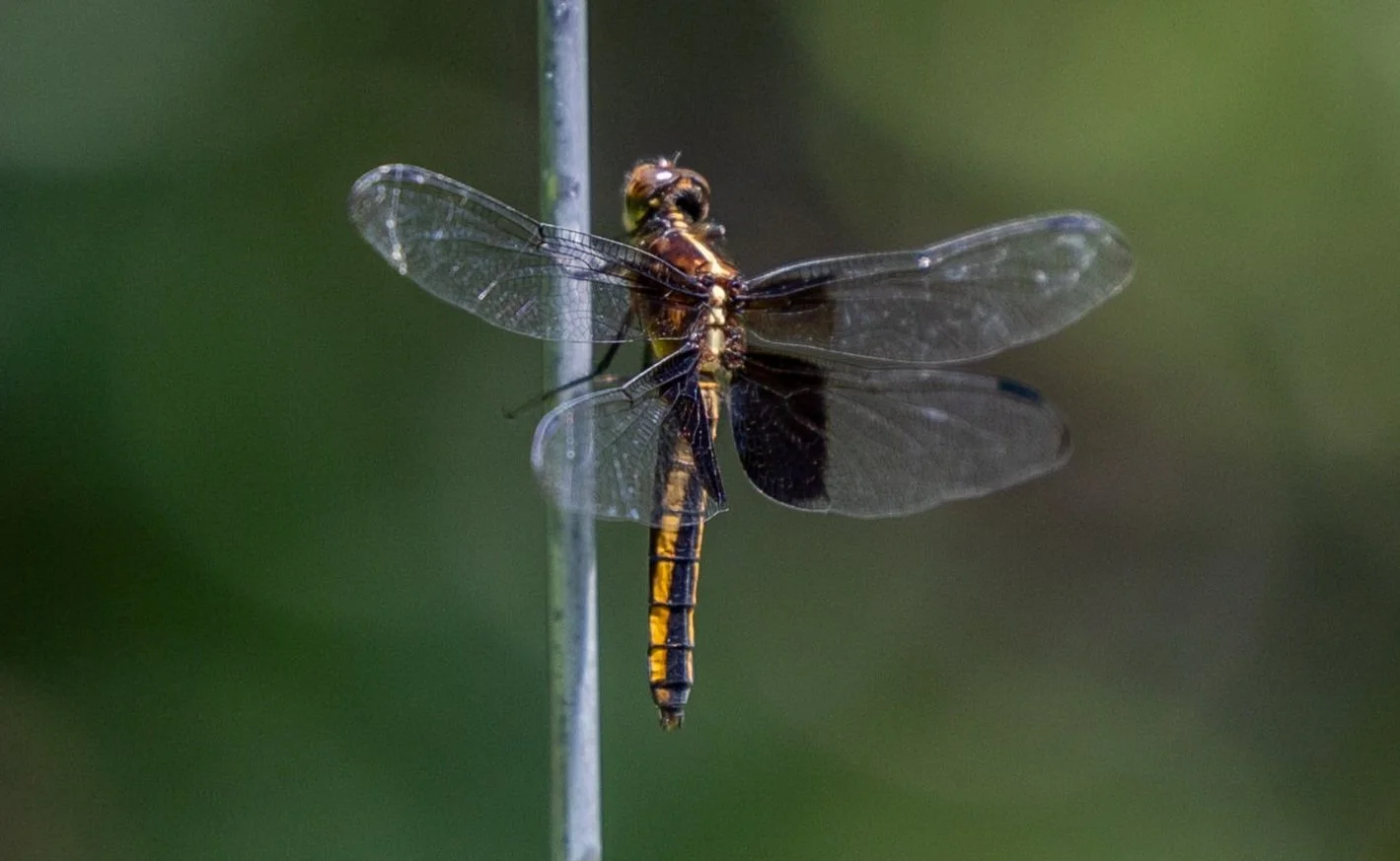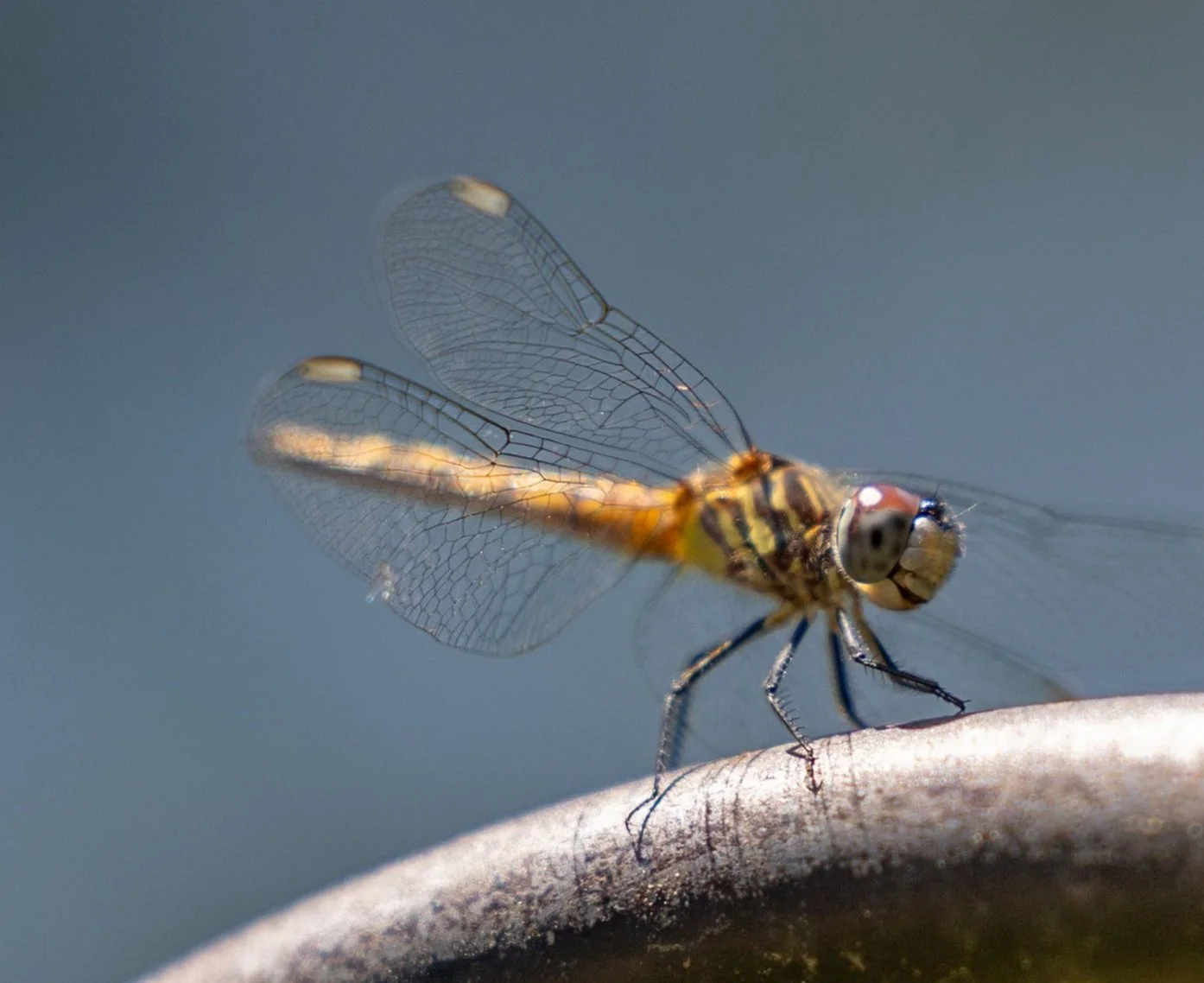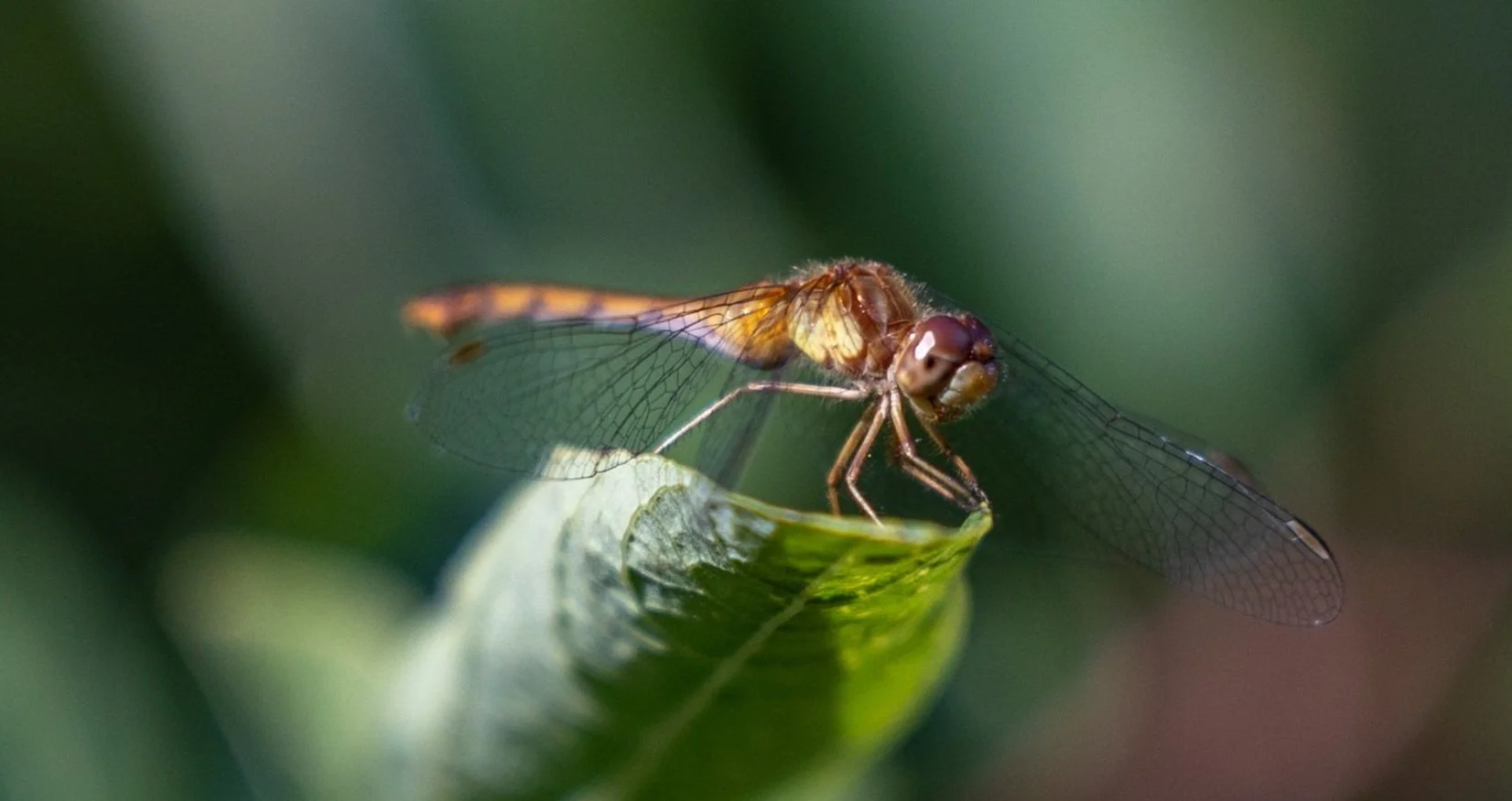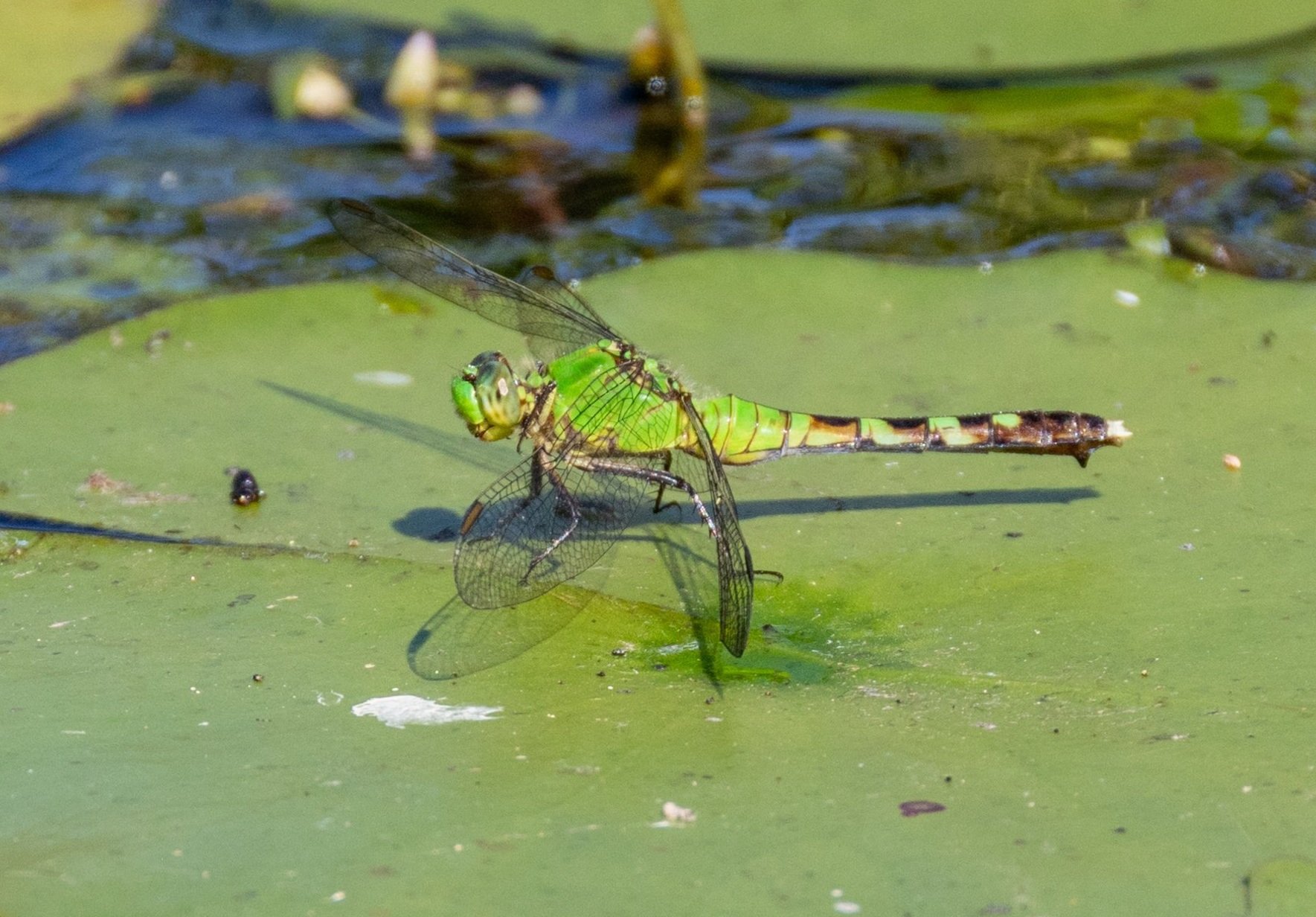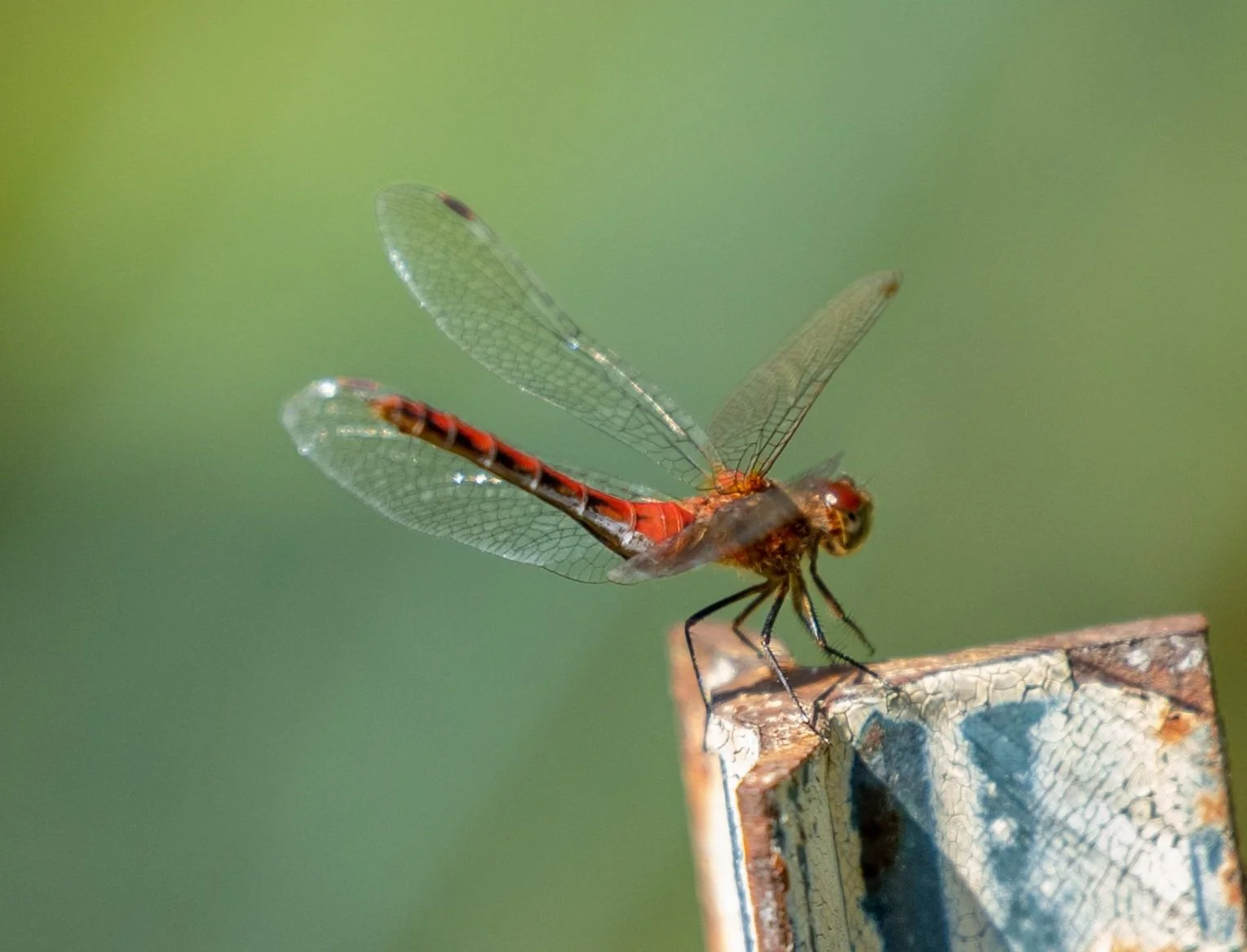Dragonflies
Dragonflies are fascinating insects belonging to the order Odonata, known for their elongated bodies, large multifaceted eyes, and two pairs of strong, transparent wings. They are among the oldest living species of insects, with ancestors dating back over 300 million years. Dragonflies are expert fliers, capable of hovering, gliding, and even flying backward. They spend most of their lives in the larval stage, called nymphs, living underwater where they are voracious predators. As adults, dragonflies continue this predatory lifestyle, feeding on mosquitoes, flies, and other small insects, making them beneficial for controlling pest populations. Their presence is also an important indicator of a healthy ecosystem, especially clean water sources.
Ancient Lineage
Dragonflies belong to one of the most ancient lineages of insects, with fossil records tracing their ancestors back over 300 million years to the Carboniferous period. These early dragonfly-like insects, such as Meganeura, were much larger than today's species, boasting wingspans of up to 75 centimeters (about 2.5 feet), likely due to higher oxygen levels in the atmosphere at the time. Despite changes over millions of years, modern dragonflies retain many of the same physical characteristics as their prehistoric relatives, including two pairs of strong, transparent wings and large compound eyes. Their ancient lineage makes them living fossils—remarkable examples of evolutionary stability—and offers scientists valuable insight into the development of flight, vision, and predation in insects over geological time.
Colorful Wings
Dragonflies, ancient and captivating insects, possess wings that often display a stunning array of colors. These vibrant hues are not typically due to pigments, but rather a fascinating phenomenon called structural coloration. The intricate network of veins and the incredibly thin, multi-layered structure of the wing's cuticle cause light to refract and interfere with itself. This process selectively reflects certain wavelengths of light, resulting in the iridescent blues, greens, yellows, and reds we observe. Additionally, some dragonflies do possess pigments, which can contribute to darker markings or influence the base color, further enhancing the visual complexity and beauty of their wings. These colorful wings are not just for show; they play a crucial role in flight, thermoregulation, and even communication between individuals.
Global Presence
Dragonflies are remarkable insects with a widespread global presence, found on every continent except Antarctica. Their adaptability allows them to thrive in diverse climates and habitats, from tropical rainforests and temperate wetlands to mountainous regions and deserts. Dragonflies are closely associated with freshwater ecosystems—such as ponds, lakes, and rivers—where they lay their eggs and their aquatic nymphs develop. This global distribution reflects their ancient evolutionary history and ecological importance as both predators and prey. Their presence across the world also makes them valuable indicators of environmental health and water quality.
Exceptional Eyesight
Dragonflies have some of the most advanced eyesight in the insect world, thanks to their large compound eyes, which can contain up to 30,000 individual lenses (ommatidia). These eyes wrap around most of their head, giving them nearly 360-degree vision. Dragonflies can detect movement and light changes with incredible precision, allowing them to spot and capture prey mid-air with amazing accuracy. They can also see a wide range of colors, including ultraviolet light, which is invisible to humans. This exceptional vision plays a key role in their ability to hunt, avoid predators, and navigate their environment.
Mosquito Control
Dragonflies play an important ecological role as natural mosquito control agents. Both dragonfly larvae (nymphs) and adults are voracious predators of mosquitoes. In their aquatic larval stage, dragonflies live in ponds and wetlands, where they feed on mosquito larvae, helping to reduce the number of mosquitoes before they even reach adulthood. Once mature, adult dragonflies continue to hunt mosquitoes, often catching and eating them mid-flight. Because they target mosquitoes throughout their life cycle and do not harm humans or plants, dragonflies are considered a beneficial and environmentally friendly form of pest control.
Jet Propulsion
Dragonflies exhibit a primitive form of jet propulsion during the larval stage, not as adults. Dragonfly larvae, known as nymphs, live in water and use a unique method of movement by rapidly expelling water from their rectal chamber through the anus. This sudden release of water creates a thrust that propels the larva forward—similar in concept to how a jet engine expels air. This form of locomotion helps the nymphs evade predators and surprise prey. While adult dragonflies rely on their powerful wings for agile flight, their larval jet propulsion is a remarkable example of evolutionary adaptation in aquatic environments.
Thermoregulation
Dragonflies, being ectothermic insects, primarily rely on external sources of heat to regulate their body temperature, which is crucial for flight and other activities. They employ a fascinating array of behavioral adaptations to achieve this. On cool mornings, dragonflies bask in the sun, orienting their bodies to maximize solar heat absorption. Conversely, to avoid overheating on hot days, they may adopt an "obelisk" posture, raising their abdomen vertically to minimize the surface area exposed to direct sunlight. Some species can also "wing-whirr," rapidly vibrating their wings to generate heat in their thorax, similar to shivering in mammals. Furthermore, physiological mechanisms like controlling blood flow between the thorax and abdomen help them retain or dissipate heat as needed. These diverse strategies highlight the intricate ways dragonflies manage their thermal balance in varying environmental conditions.
Fast Flyers
Dragonflies are among the fastest flying insects, capable of reaching speeds up to 30 miles per hour. Their speed and agility come from their unique wing structure—unlike most insects, dragonflies have two pairs of wings that can move independently. This allows them to perform complex aerial maneuvers such as hovering, gliding, and even flying backward. Powerful muscles attached directly to the wings give dragonflies rapid wingbeats and precise control over each wing's movement. Their lightweight, streamlined bodies and large eyes also help them detect and respond quickly to changes in their environment, making them efficient and swift predators in the air.
Toothed Jaws
Dragonflies possess a unique and formidable feeding mechanism characterized by their toothed jaw, or mandibles, which they use to catch and consume prey. Unlike the soft mouthparts of some insects, dragonflies have strong, serrated mandibles lined with tooth-like structures that can easily shred the exoskeletons of smaller insects. These jaws are part of a specialized mouth adapted for biting, allowing dragonflies to be efficient aerial predators. When hunting, they capture their prey mid-flight and use their toothed jaws to quickly crush and devour it, often while still flying. This adaptation highlights the dragonfly’s role as a top predator among flying insects.
Dragonfly Mating
Dragonfly mating is a fascinating and unique process in the insect world. The male dragonfly first transfers sperm from the tip of his abdomen to a specialized secondary genitalia located near the front of his abdomen. He then uses claspers at the end of his abdomen to grasp the female, typically behind the head or thorax, forming a tandem pair. If the female is receptive, she curls the tip of her abdomen forward to meet the male's secondary genitalia, creating a distinctive heart or wheel-like shape. During this "wheel" position, sperm transfer occurs. Uniquely, male dragonflies have the ability to remove sperm from previous mates before depositing their own, ensuring their paternity. After mating, the male may guard the female during egg-laying, either by remaining in tandem or by hovering nearby, to prevent other males from mating with her.
Wing Shimmer
Dragonfly wings often exhibit a mesmerizing shimmer, an optical phenomenon known as iridescence. This isn't due to pigments in their wings, but rather the microscopic structure of the wing surface. Thin, multilayered films and ridges on the wing interact with incoming light waves. As light strikes these surfaces, some wavelengths interfere constructively, reinforcing each other and appearing bright, while others interfere destructively and are canceled out. The specific wavelengths that are enhanced depend on the angle of observation and the angle of the incident light, resulting in the shifting, rainbow-like colors we perceive as shimmer. This structural coloration can serve various purposes, including camouflage, species recognition, and even thermoregulation.
Nymph Predators
Dragonfly nymphs, the aquatic larval stage of these aerial predators, are themselves formidable hunters in their underwater world. Equipped with a unique, extendable lower jaw featuring sharp pincers, they lie in wait amongst submerged vegetation or bottom substrates. When unsuspecting prey, such as mosquito larvae, other aquatic insects, small crustaceans, tadpoles, or even tiny fish, ventures too close, the nymph's specialized jaw shoots out with remarkable speed to snatch the victim. Their large eyes provide excellent vision, aiding in the detection of movement in the water. This predatory behavior during their nymph stage is crucial for their growth and development before they emerge as the swift and agile adult dragonflies that patrol the skies.
Dragonfly Lifespan
While the popular notion suggests dragonflies live for only a day, their actual lifespan is considerably longer, spanning several months to even years, depending on the species. The majority of a dragonfly's life is spent in the aquatic nymph stage, where they can live for one to five years, molting multiple times as they grow. During this time, they are active predators in their underwater habitats. The familiar adult, winged stage, while shorter, still allows them to grace our skies for several weeks to a few months, dedicated to reproduction. Factors such as species, environmental conditions like water temperature and food availability during the nymph stage, and predation influence the overall lifespan of these fascinating insects..
Blue Dasher Dragonfly
The Blue Dasher Dragonfly (Pachydiplax longipennis) is a common and widespread skimmer species found throughout much of North America. These agile fliers typically inhabit calm, still waters such as ponds, marshes, and slow-moving streams. Adult males are easily recognizable by their vibrant blue abdomen tipped with black, a white face, and striking metallic green eyes, while females and immature males exhibit greenish-yellow thoraxes with black stripes and reddish-brown eyes. Blue Dashers are voracious predators both in their aquatic nymph stage, where they feed on insect larvae and even small fish, and as adults, where they hunt a variety of flying insects, including mosquitoes, flies, and moths. Their life cycle includes three stages: egg, aquatic nymph, and terrestrial adult, with the nymph stage potentially lasting several years. Interestingly, Blue Dasher nymphs are tolerant of poor water quality and low oxygen levels, sometimes making their presence an indicator of environmental conditions.
Female Blue Dasher Dragonfly
The female Blue Dasher (Pachydiplax longipennis) is a striking and widespread dragonfly species found throughout much of North America. While males are known for their bright blue abdomens and green eyes, females are generally brownish or olive-colored with distinctive yellow-striped thoraxes and clear wings that may have subtle amber markings near the tips. This coloration provides effective camouflage among reeds and grasses near ponds, marshes, and slow-moving streams—typical habitats for Blue Dashers. Females are not just passive participants in reproduction; they often select oviposition sites by tapping their abdomen on the water surface to deposit eggs, sometimes aggressively defending these areas. Like males, they are agile fliers and skilled hunters, feeding on small flying insects such as mosquitoes and midges. Their presence supports ecosystem balance and offers insight into wetland health and biodiversity.
Common Darter Dragonfly
The Common Darter Dragonfly (Sympetrum striolatum) is a widespread and frequently observed insect across Europe and parts of Asia. These medium-sized dragonflies, with a body length of about 4 cm, exhibit sexual dimorphism in their coloration; mature males are typically a vibrant red, while females and immature males display yellowish-brown hues. True to their name, common darters are agile fliers, often seen hovering over various freshwater habitats like ponds, ditches, and slow-moving rivers, from which they dart out to capture insect prey. Their life cycle begins with eggs laid in shallow water or on emergent vegetation, hatching into aquatic larvae (nymphs) that spend one to two years developing through multiple molts before emerging as terrestrial adults. Adult common darters are often seen perching on vegetation or other sun-warmed surfaces, and they play a significant role in their ecosystems as predators of smaller flying insects.
Widdow Skimmer Dragonfly
The Widow Skimmer Dragonfly (Libellula luctuosa) is a striking insect commonly found near ponds, lakes, marshes, and slow-moving streams across much of North America. Its name comes from the distinct broad, dark bands near the base of its wings, which are particularly prominent in males and contrast with the whitish patches that develop mid-wing as they mature. Females have similar dark basal patches but lack the white markings. These medium-sized dragonflies are active predators, both in their aquatic nymph stage, where they feed on smaller aquatic insects and even tadpoles, and as adults, where they hunt flying insects like mosquitoes, often perching on vegetation to ambush their prey. Male widow skimmers are territorial, defending their chosen areas to attract females for mating, which occurs in a characteristic "wheel" formation.
White Faced Meadowhawk Dragonfly
The White-faced Meadowhawk (Sympetrum obtrusum) is a small dragonfly, typically less than 1.5 inches long, belonging to the skimmer family. True to its name, the mature male exhibits a distinctive pearly white face and a vibrant red abdomen, while females and immature males display yellowish to brownish hues. These dragonflies inhabit a variety of freshwater wetlands, including ponds, marshes, bogs, and slow-moving streams, often venturing into nearby grassy fields to hunt. Unlike some larger dragonfly species, white-faced meadowhawks fill a unique ecological niche by preying on small, soft-bodied flying insects like mosquitoes and flies in open areas where larger competitors are less prevalent. Their life cycle begins with eggs laid in shallow water or even dry basins that will flood, followed by an aquatic larval stage where they develop for several weeks before emerging as terrestrial adults, typically active from early summer to mid-fall.
Coppery Emerald Dragonfly
The Coppery Emerald (Somatochlora georgiana) is a rare and elusive species of dragonfly belonging to the family Corduliidae, commonly known as emerald dragonflies due to their typically metallic green bodies. As its name suggests, the Coppery Emerald is distinguished by its shimmering coppery-bronze coloration, which can appear metallic in sunlight. This species is native to parts of the southeastern United States, where it inhabits slow-moving, forested streams and wetlands. Very little is known about its behavior and population due to its secretive nature and limited range, making it a species of conservation interest. Like other dragonflies, it plays an important ecological role as both a predator of smaller insects and as prey for birds and fish. Its rarity and habitat preferences make it an important indicator of the health of freshwater ecosystems.
Canada Darner Dragonfly
The Canada Darner Dragonfly (Aeshna canadensis) is a striking insect characterized by its blue and brown coloration, with males exhibiting brighter hues than females. These agile fliers, with a wingspan reaching up to 74 mm, are commonly found near wooded lakes, ponds with abundant vegetation, and slow-moving streams, often associated with beaver ponds across southern Canada and the northern United States. As voracious predators, both the aquatic nymph and the terrestrial adult Canada darners play a significant role in their ecosystems by feeding on a variety of insects, including mosquitoes, flies, and other smaller invertebrates, helping to regulate insect populations. The female Canada darner lays her eggs in aquatic plant stems, and the nymphs, with their elongated bodies, spend months to years in the water before emerging as adults, contributing to the biodiversity of both wetland and forest edge habitats.
Eastern Pondhawk Dragonfly
The Eastern Pondhawk Dragonfly (Erythemis simplicicollis) is a common and widespread member of the skimmer family found throughout much of eastern North America. This species exhibits striking sexual dimorphism: mature males develop a powdery blue abdomen and a green face, while females and young males are a vibrant green with black markings on their abdomen. These agile predators are typically found near ponds, lakes, and slow-moving waters with emergent vegetation, where they hunt a variety of flying insects, including damselflies and even other dragonflies. The aquatic larval stage, known as a nymph, is also a voracious predator, feeding on other aquatic invertebrates and even small fish before emerging as a terrestrial adult. Male eastern pondhawks are known to be territorial, actively defending small areas of vegetation near the water, often engaging in aerial displays to ward off rivals and attract females.
Common Whitetail Dragonfly
The Common Whitetail Dragonfly (Plathemis lydia) is a familiar sight across much of North America, easily recognized by the mature male's distinctive chalky white abdomen and broad dark bands on its wings, giving it a checkered appearance in flight. Females and young males have a brown abdomen with yellowish spots and a different wing pattern of three dark spots per wing. These medium-sized dragonflies are often seen perching on low vegetation, rocks, or even the ground near ponds, marshes, and slow-moving waters, where they hunt for various flying insects. The nymphs, which are aquatic predators, live in the muddy bottoms of these water bodies, feeding on insect larvae and small aquatic life before emerging as adults, typically in the warmer months. Male common whitetails are territorial, actively defending their chosen perches along the water's edge to attract females for mating, which occurs briefly in flight before the female lays her eggs in the water, often near floating vegetation.
Ruby Meadowhawk Dragonfly
The Ruby Meadowhawk Dragonfly (Sympetrum rubicundulum) is a captivating member of the skimmer family (Libellulidae) commonly found across the northern United States and southern Ontario. Adult males are particularly striking, boasting a vibrant red abdomen and an orange to brown face, while females exhibit similar facial coloring with a brown to dark-red body. These relatively small dragonflies, with a length of about 1.3 to 1.4 inches, are often seen near the shorelines of ponds, marshes, and lakes from late June to early October. Like all dragonflies, the ruby meadowhawk begins its life as an aquatic larva, preying on various underwater insects and even small fish before emerging as a terrestrial adult with a voracious appetite for flying insects. Identifying ruby meadowhawks can be tricky, as they share similarities with other meadowhawk species, requiring close observation of facial color, leg coloration, and sometimes even the shape of specific abdominal structures.
Eastern Meadowhawk Dragonfly
The Eastern Meadowhawk Dragonfly (Sympetrum vicinum) is a common and easily recognizable species found throughout eastern North America. These relatively small dragonflies, measuring about 1.2 to 1.4 inches long, exhibit distinct color variations between sexes and maturity stages. Mature males boast a vibrant red abdomen, while females and immature males display yellowish to brownish-red hues. A key identifying feature, as its name suggests, is the yellow legs present in adults of both sexes. Eastern meadowhawks thrive in a variety of freshwater habitats, including marshes, ponds, and slow-moving streams, where they hunt small flying insects. Their life cycle begins with eggs laid in shallow water, hatching into aquatic nymphs that spend weeks or months developing before emerging as terrestrial adults, typically observed flying from late summer into the fall.






















